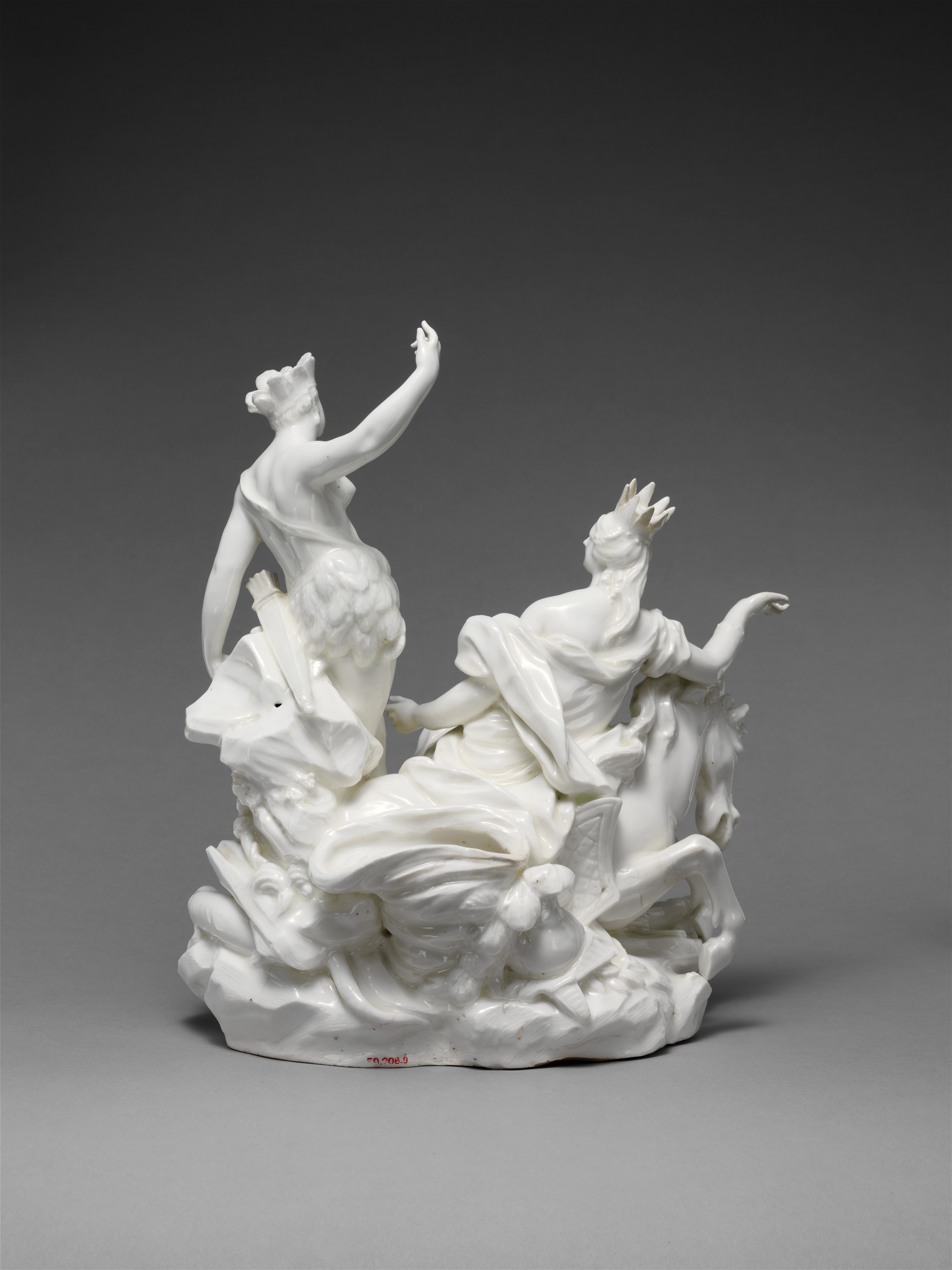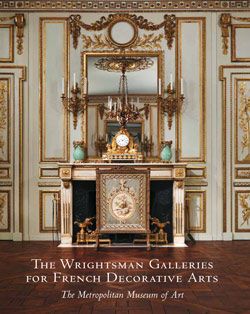Europe and America
Manufactory Vincennes Manufactory French
Modeler Le Boiteux
Not on view
A very limited number of figures and figure groups were made at the Vincennes porcelain factory; it was only after the move to a larger building at Sèvres in 1756 that the factory produced figures on a significant scale. This group with the personifications of Europe and America was made with a pendant, which represents the continents of Asia and Africa. In the present composition, Europe is depicted wearing a crown and reclining against her horse, with flags and a cornucopia at her feet. America, in a feathered headdress and skirt, holds a bow with a quiver of arrows and has a crocodile at her back. In the eighteenth century, these various attributes would have made the two continents to which they allude immediately identifiable. The vast majority of the figures first produced at Vincennes were not decorated with enamels but were only glazed. Perhaps because glaze was found to obscure the details of the modeling, it was used very rarely on figures after 1752. Examples produced after this date customarily were left unglazed, in the so-called biscuit state, in which the fired white porcelain resembles marble. The greater popularity of biscuit figures coincided with the developing Neoclassical taste, which held the marble sculpture of antiquity in especially high regard.
Due to rights restrictions, this image cannot be enlarged, viewed at full screen, or downloaded.
This artwork is meant to be viewed from right to left. Scroll left to view more.




